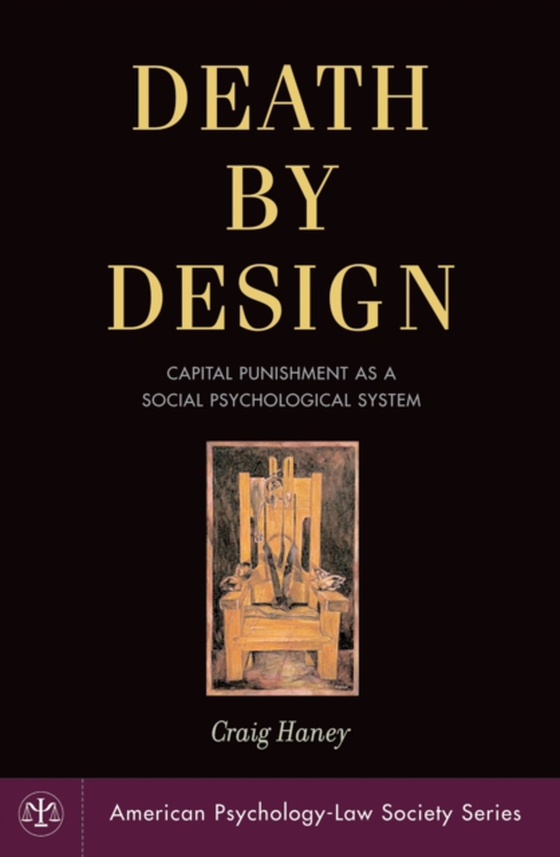
Death by Design e-bog
546,06 DKK
(ekskl. moms 436,85 DKK)
How can otherwise normal, moral persons - as citizens, voters, and jurors - participate in a process that is designed to take the life of another? In DEATH BY DESIGN, research psychologist Craig Haney argues that capital punishment, and particularly the sequence of events that lead to death sentencing itself, is maintained through a complex and elaborate social psychological system that distanc...
E-bog
546,06 DKK
Forlag
Oxford University Press
Udgivet
2005
Genrer
Criminal or forensic psychology
Sprog
English
Format
pdf
Beskyttelse
LCP
ISBN
9780198040224
How can otherwise normal, moral persons - as citizens, voters, and jurors - participate in a process that is designed to take the life of another? In DEATH BY DESIGN, research psychologist Craig Haney argues that capital punishment, and particularly the sequence of events that lead to death sentencing itself, is maintained through a complex and elaborate social psychological system that distances and disengages us from the true nature of the task. Relying heavily on his own research and that of other social scientists, Haney suggests that these social psychological forces enable persons to engage in behavior from which many of them otherwise would refrain. However, by facilitating death sentencing in these ways, this inter-related set of social psychological forces also undermines the reliability and authenticity of the process, and compromises the fairness of its outcomes. Because these social psychological forces are systemic in nature - built into the very system of death sentencing itself - Haney concludes by suggesting a number of inter-locking reforms, derived directly from empirical research on capital punishment, that are needed to increase the fairness and reliability of the process. The historic and ongoing public debate over the death penalty takes place not only in courtrooms, but also in classrooms, offices, and living rooms. This timely book offers stimulating insights into capital punishment for professionals and students working in psychology, law, criminology, sociology, and cultural area studies. As capital punishment receives continued attention in the media, it is also a necessary and provocative guide that empowers all readers to come to their own conclusions about the death penalty.
 Dansk
Dansk

